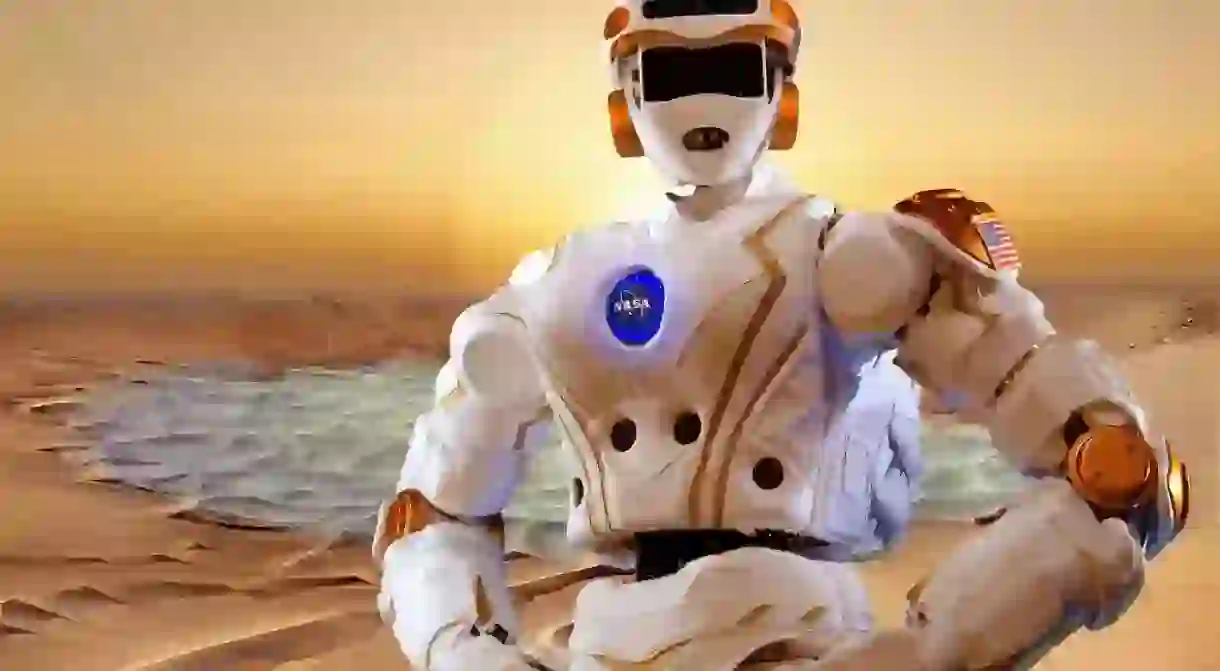Edinburgh University’s NASA Humanoid Robot is the Coolest Thing You’ll See Today

With recent films like Ex Machina and television series like Westworld, there’s no denying the surge in sci-fi stories where robots emulate – and even conquer or surpass – humans. It seems that technology is finally catching up with the creatives who conjure up these futuristic narratives. Take Edinburgh for instance, home to one of the most advanced humanoid robots out there – the NASA Valkyrie.
A flawless blend of machine and man’s ingenuity, NASA Valkyrie – the masterpiece of Professor Sethu Vijayakumar, his team of brilliant minds at the University of Edinburgh, and NASA JSC in Texas – is remarkable. Vijayakumar, Director of the Edinburgh Centre for Robotics, and his team, played an invaluable role regarding the design and control of Valkyrie. In 2016, Edinburgh became the only university in Europe to get its hands on a replica of the original NASA-built robot.

Decked out to the nines yet strikingly real, this R5 battery-powered humanoid robot, at 125 kilos (275 pounds) and 1.8 metres (5.9 feet) tall, resembles a Power Ranger, superhero, childhood action figure and Transformer all rolled into one. Then again, there’s nothing quite like it. A rotating waist, tilting head, three fingers and a thumb on each hand, and sensors on its arms, knees, feet, abdomen and head, are just a few of its features.

Not just a pretty face, this talented humanoid is destined to pave the way, traversing uncharted territory in the realms of humanoid control, perception and motion planning. Once more, Valkyrie is projected to work on Mars.
Written in the stars since its inception, the NASA Valkyrie platform could play a vital role in the future of space expeditions, particularly when it comes to pre-deployment missions to Mars. Imagine a mission where astronauts don’t have to land until an army of humanoids set up fort with labs and habitats prior to arrival. Then, picture the astronauts leaving post-mission and envision these robots as they remain to ‘man’ the vicinity.

The trailblazing effects of Valkyrie on the robotics industry are astronomical, with its uses predicted to compliment fields other than space exploration, such as working alongside humans in elderly care, the medical industry and situations that require disaster first-response aid. The sky is the limit.
Until space missions, the team at the Edinburgh Centre for Robotics, a partnership between Edinburgh University and Heriot-Watt University, will further their research regarding this robotic prodigy. Perhaps soon it will develop a Scottish accent.













